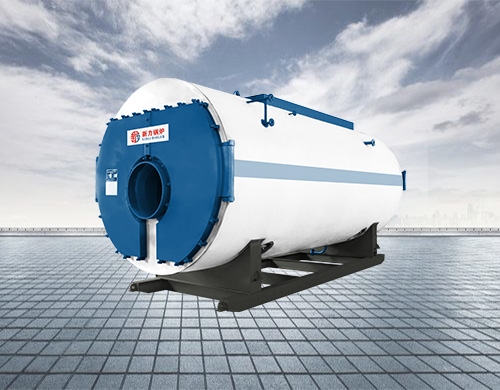Guide: Because the fuel characteristics of gas-fired steam boilers are different from fossil fuels, the fire extinguishing mechanism, reaction speed and composition of quenched products in the fire extinguishing process of biomass fuels are also very different from fossil fuels. Biomass boilers: horizontal biomass boilers, vertical biomass boilers. Biomass gas heat conduction oil furnace, biomass steam boiler, biomass hot water boiler, biomass heat conduction oil furnace.
Introduction of extinguishing process of gas steam boiler

Because the fuel characteristics of gas-fired steam boilers are different from fossil fuels, the fire extinguishing mechanism, reaction speed and composition of quenched products in the fire extinguishing process of biomass fuels are also very different from fossil fuels.
Biomass boilers: horizontal biomass boilers, vertical biomass boilers. Biomass gas heat conduction oil furnace, biomass steam boiler, biomass hot water boiler, biomass heat conduction oil furnace.
The hot water boiler is equipped with a computerized boiling water boiler controller, and all functions are stored on a smart chip, which realizes the intelligence, digitization, automation, and humanization of the boiler. The boiler intelligently controls the water temperature and automatically stops heating when the water temperature is reached; large screen fonts The water temperature is displayed and the boiler water temperature is clear at a glance.
Gas-fired hot water boilers are environmentally friendly, energy-saving, safe, and fully automatic operation. They are very convenient to use. In addition, due to economic operation and government policy encouragement, gas-fired hot water boilers are more and more popular. The extinction characteristics of fossil fuels are different from those of fossil fuels.
The fire extinguishing process of biomass fuel in gas steam boiler is mainly divided into two independent stages: precipitation and extinguishment of volatile matter, and extinguishment and burnout of coke in gas steam boiler. The former accounts for about 10% of the fire fighting time, and the latter accounts for about 90%.
The specific fire extinguishing process is as follows: After the fuel of the gas steam boiler is sent into the quenching chamber, the water is heated and precipitated under the action of high temperature heat. Subsequently, as the temperature of the fuel of the gas-fired steam boiler continues to rise, about 250 degrees Celsius, thermal synthesis begins, volatiles precipitate and form coke.
The mixture of the volatile matter of the gas steam boiler and the surrounding high-temperature air is first ignited and extinguished. Under normal circumstances, the coke of the gas-fired steam boiler is surrounded by volatile sub-packages.
The oxygen in the fire extinguishing chamber cannot easily penetrate to the surface of the coke. As long as the dissipation of volatile substances is about to end, the temperature of the coke and its surroundings of the gas-fired steam boiler is already very high. High, the oxygen in the air may also come into contact with the appearance of the coke, and the coke of the gas-fired steam boiler begins to extinguish, producing ashes from time to time.




























